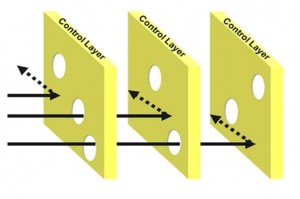
John Bleasby
The Swiss cheese method of site safety decision-making
Canadian ContractorJohn Bleasby poses the question: What if you could turn back the clock?
The collapsed walls that came tumbling down last week at a major home re-construction site in east end Toronto must have been the builder’s worst nightmare. Something had clearly gone very wrong. Maybe it was the pressure of expediency, maybe it was a matter of economics, maybe it was carelessness; we don’t know. While inspectors and investigators sift through the rubble to determine the cause, you can bet on one thing: somewhere along the line, a bad choice was made.
Read: Not Again! Toronto house collapses under construction
Pointing fingers at bureaucratic bottlenecks, over- regulation, lack of clarity regarding building permit requirements, or inspectors who don’t show up to inspect doesn’t hide the fact that each and every builder must take responsibility for their job sites. For example, even if the building code doesn’t specifically say how to reinforce existing older block walls left standing during a ‘renovation’, even if an inspector doesn’t show up to give the go-ahead, both lives and livelihoods depend on the correct decisions being, made no matter what.
It’s the Swiss cheese model of decision management. Each decision, once made, either limits or increases the available options next time. Put enough poor decisions together, and you have get an inevitable bad result.
I learned this in flight school many years ago on my way to becoming a commercial pilot. Each layer of cheese represents a point at which a choice needs to be made. In other words, the cheese is an opportunity to either accept safeguards or to take risks. For example, a decision to take a regulatory shortcut may allow you to pass through a ‘hole’ in the first layer, ie. circumvent an obstacle. However, the holes (available options) are fewer in number with each successive layer of cheese. As the number of options decreases with each wrong choice (ie. making one poor decision after another) you find yourself compounding those bad choices and on the path towards a serious problem.
It applies to life, it applies to flying aircraft, and it probably (although we don’t know for sure) applied to the builder at this particular site in Toronto.
Wouldn’t it be great if you could turn the clock back and re-live the moments? If you could, chances are you could identify exactly what choice you made that set you down a road leading to trouble, and then make a different decision.
However, you can’t buckle up your safety harness as you plummet to the ground. There’s little point picking up the loose nails and scrap material that injured a co-worker after the ambulance has left for the hospital. It’s the tragic irony of ‘bolting the stable door after the horse has run away’.
The trick is to understand how critically important those early decisions are in terms of determining the outcome, and to make the correct choices.
Advertisement
Print this page


A job well planned is half done and there are no shortcuts to a safe job site! Clean job sites and letting concrete cure for seven days is a must and not something to shortcut. It’s too late after the damage is done. They were very lucky some was not hurt or killed. Lets all be safe and arrive home to our loved ones in one piece.